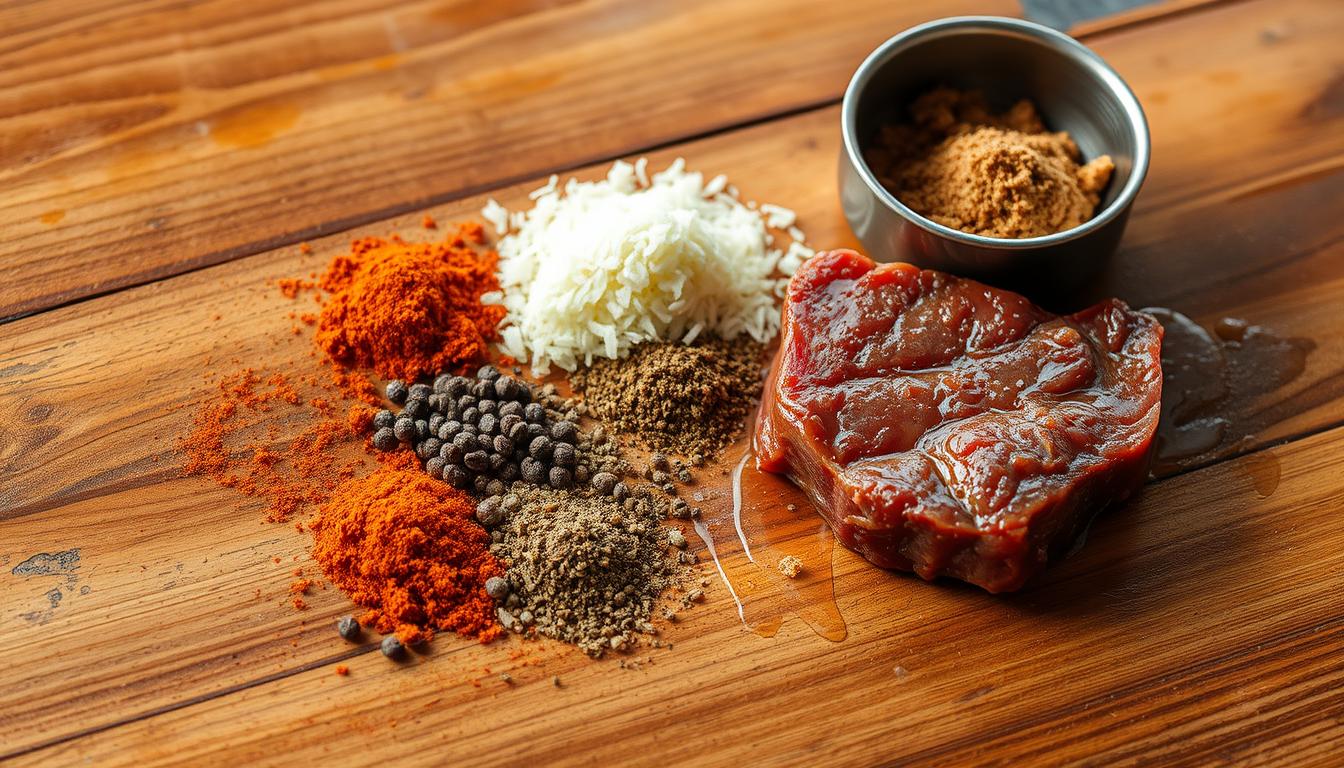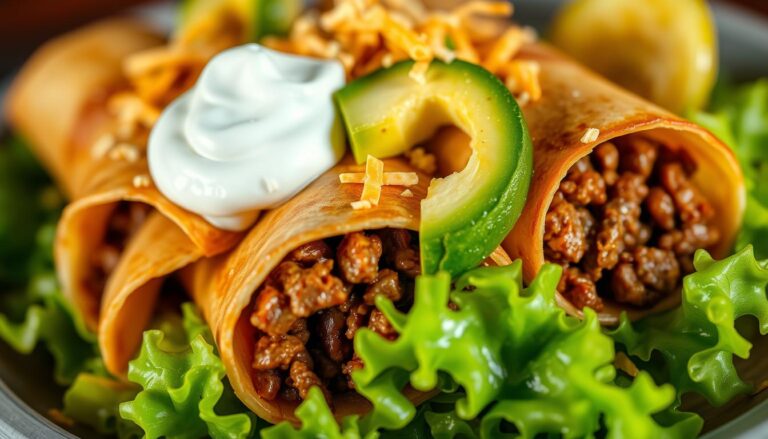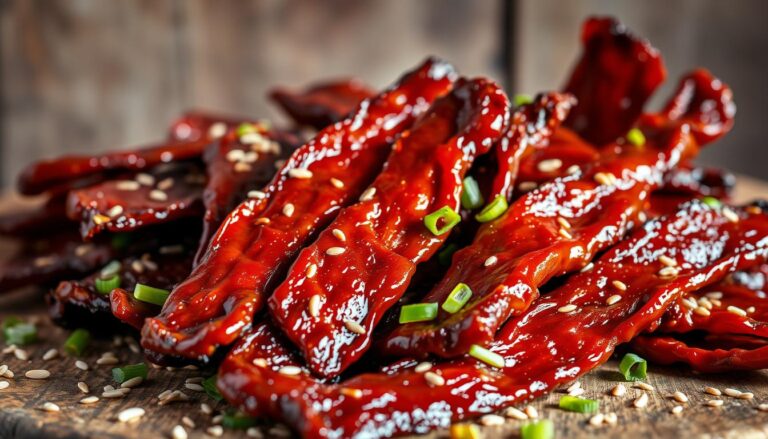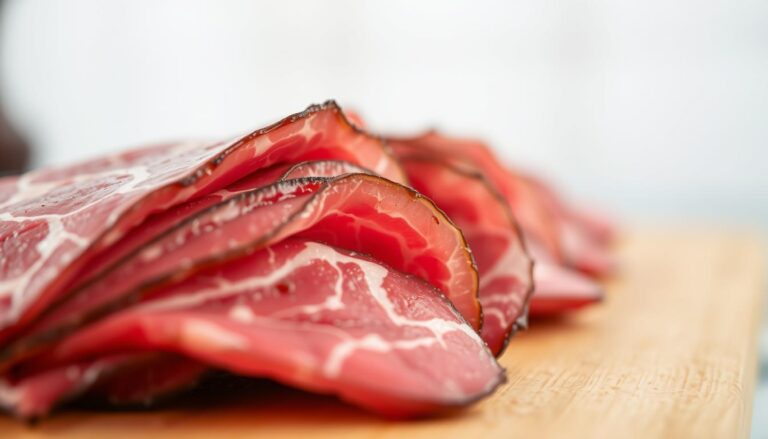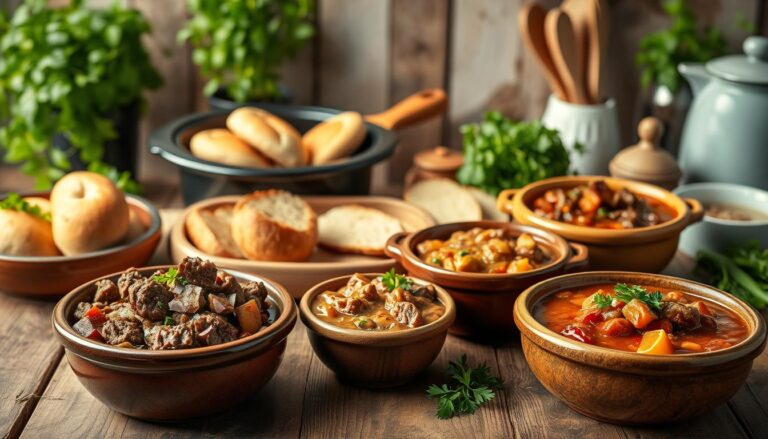The Best Steak Rub: Elevate Your BBQ with This Recipe
Do you remember that time when a steak tasted so good it felt like a party? That’s what a great steak rub can do. Imagine your next backyard grill session becoming the highlight of the neighborhood, all thanks to a seasoning blend that takes just 5 minutes to mix.
This isn’t just any steak rub—it’s the kind that makes ordinary cuts taste like they’re from a restaurant. No more relying on store-bought packets that taste the same every time. This homemade steak rub uses 9 simple ingredients like smoked paprika, brown sugar, and garlic powder. It clings to meat and caramelizes into a crust that’s unforgettable.
Whether you’re grilling for a big crowd or a cozy dinner for two, this best steak rub recipe fits every taste. It’s not just for steaks—try it on chicken, fish, or even veggies. And the best part? Once you make the blend, it stays fresh for six months. Ready to say goodbye to bland and hello to bold? Let’s explore how this rub changes every bite.
Table of Contents
What is a Steak Rub?
A steak rub is a blend of spices, salt, and sweeteners. It turns plain meat into a tasty dish. This dry rub creates a crunchy crust on the outside while cooking.
Unlike marinades, it doesn’t soak into the meat. Instead, it adds bold flavors from the outside.
Definition and Purpose
A steak rub is a dry mix of ingredients like paprika, garlic powder, and brown sugar. It serves two main purposes. First, it enhances the meat’s natural flavor. Second, it forms a caramelized crust during grilling.
Salt in the rub tenderizes the surface. Sugars caramelize, adding extra depth to the flavor.
- Ingredients: Spices, salt, and optional sweeteners like brown sugar.
- Function: Enhances taste, builds a savory crust, and locks in juices.
- Application: Rubbed onto the steak’s surface before cooking for best results.
Whether you buy it or make it yourself, apply the seasoning 30 minutes to 3 hours before cooking. The dry rub stays on the surface. This makes it great for quick meals or slow-cooked barbecue.
It’s perfect for any steak cut, from tenderloin to flank steak. It’s a simple way to boost flavor without complicated steps.
Why You Should Use a Steak Rub
Turn your steak into a masterpiece with a steak rub. This mix of spices does more than just add flavor—it enhances the whole experience. Let’s explore how a steak rub elevates your meal.
Enhances Flavor
A steak rub brings out amazing flavors. Ingredients like garlic powder, smoked paprika, and brown sugar add savory, sweet, and smoky tastes. Brands like Montreal Steak Seasoning and Jack Daniel’s Steak Seasoning show how these blends enhance the meat’s taste without overpowering it.
Tenderizes Meat
Salt in the rub helps tenderize the meat. It pulls moisture from the fibers and then absorbs it, making the meat tender. Coarse kosher salt, found in Kinder’s The Steak Blend, works best for this. Sugar in the mix caramelizes, adding depth and breaking down connective tissues.
Creates a Delicious Crust
High-heat cooking triggers the Maillard reaction, creating a crispy, caramelized crust. Use Badia Steak Seasoning’s caraway and coriander for bold flavors. A 5-minute prep before grilling at 450°F ensures a quick crust without drying the meat.
Pro tip: Let the rub sit for 30 minutes to an hour. This allows flavors to soak in without over-saturating. Pair it with ribeye or flank steak for the best results. Your taste buds—and guests—will love the difference.
Essential Ingredients for a Perfect Steak Rub
Starting your homemade steak rub means knowing the steak rub ingredients that mix flavor and function. These elements work together to boost taste and texture. They turn a simple cut into a dish fit for a restaurant.
Common Spices and Herbs
At the heart of any mix are core spices. Key ones include:
- Smoked paprika for smoky sweetness
- Coarse black pepper for heat
- Garlic and onion powder for savory depth
- Dried thyme and rosemary for aromatic lift
- Cumin and brown sugar for complexity
These ingredients lay the foundation for flavor. They add layers without overwhelming the meat.
Salt: The Key Player
Salt is more than just a seasoning—it’s a tool. Use kosher or sea salt to draw out moisture, making a crisp crust. Aim for 1 teaspoon per pound of steak. Let it rest 30-60 minutes before cooking.
This step makes the steak tender and brings out all the rub’s flavors.
Optional Add-Ins for Unique Flavors
Add your own twist with extras like:
- Brown sugar for caramelized edges
- Chili flakes for heat
- Coffee grounds for deep earthiness
- Citrus zest for brightness
“The best rubs balance bold and subtle notes—like a symphony of flavors,” says chef Maria Lopez of BeefEpicurean.com.
Play with ratios to find your perfect mix. Store unused rubs in airtight containers for up to 6 months.
How to Make Your Own Steak Rub
Learn how to make the best steak rub recipe with this easy guide. Follow these steps to create a blend that makes any meat taste better.
- Start by mixing 2 Tbsp sea salt, 1 Tbsp onion powder, 1 Tbsp coarse black pepper, and 2 tsp garlic powder in a bowl.
- Want to add more flavor? Mix in ½ Tbsp smoked paprika, 1 tsp brown sugar, or ½ tsp cumin.
- Make sure to mix well so the spices are evenly spread. Then, store it in an airtight jar for up to 12 months.
Adjusting to Taste Preferences
Want to make your rub your own? Here are some tips:
- For more heat, add ½ tsp cayenne or red pepper flakes.
- For a touch of sweetness, add 1 tsp brown sugar but use it sparingly.
- For herbal flavors, mix in dried thyme or rosemary.
| Nutrient | Amount per Serving |
|---|---|
| Calories | 11 kcal |
| Carbohydrates | 2 g |
| Sodium | 1,165 mg |
| Potassium | 51 mg |
| Vitamin A | 860 IU |
| Calcium | 7 mg |
| Iron | 0.4 mg |
Evenly apply your rub to the steak 30 minutes before cooking. For the best results, use olive oil to help the spices stick. Keep it in a cool, dark place to keep it fresh.
Store-Bought vs. Homemade Steak Rubs
Deciding between store-bought and homemade steak rub depends on your taste. Let’s look at the good and bad sides to help you choose.
Convenience of Store-Bought Options
Commercial rubs like steak rub seasoning from Kinder’s or Badia add flavor fast. Kinder’s The Steak Blend and Badia Canadian Blend are top picks. They offer consistent taste but might have additives like MSG or too much salt. If you’re watching your budget, they cost $5–$8 for a 2-ounce jar.
- Consistency: Same flavor every time
- Unique blends: Access rare spices like caraway in Badia’s Canadian mix
- Convenience: Ready-to use without prep
Benefits of Homemade Blends
Creating your own homemade steak rub means you can choose the flavors. You avoid preservatives and control the salt. A batch costs $3–$4 and makes 8–10 steaks. Keep it in an airtight container for up to 6 months, perfect for making in bulk.
- Customizable: Swap herbs or spice levels
- Cheaper per serving: Use pantry staples
- Fresher: No filler ingredients
For quick meals, grab a store-bought blend. But for more control, make your own steak rub seasoning. It’s simple and rewarding.
Tips for Applying Steak Rub
Getting good at using your steak rub for grilling or dry rub for steak makes every bite full of flavor. The right timing and method turn spices into a tasty crust without overpowering the meat.
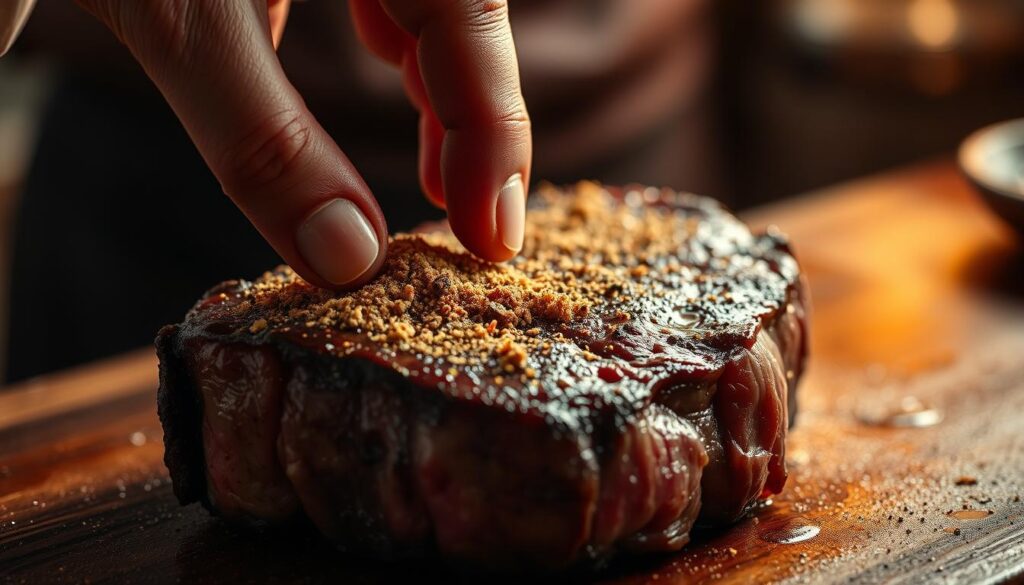
When to Apply the Rub
When you apply the rub matters a lot. For the best taste:
- Use the dry rub for steak 30 minutes to overnight. Pat the steak dry first to let salt draw out moisture, then reabsorb for juiciness.
- Apply just before cooking for bold surface flavor. Thicker cuts like ribeye benefit from 2+ hours resting time.
- Pair with high-heat grilling (500°F+) to trigger the Maillard reaction, creating a golden crust without burning sugars over 265°F.
How Much to Use
Start with a light dusting. Here’s a simple guide:
- 1 tsp per pound of meat covers most steaks. Press rub into the surface with clean hands to adhere better.
- Avoid thick coatings. Excess rub may block heat, leading to uneven cooking or charred spices.
- For extra adhesion, lightly oil the steak first. Try vegetable oil or olive oil brushed on before sprinkling the rub.
Try different coatings: A light layer shows off each spice, while a medium coat mixes flavors. Always taste-test small batches to get your blend just right!
The Perfect Steak Pairings for Your Rub
Get the most out of your steak rub by choosing the right cut and cooking method. Here’s how to make bold flavor combinations:
Cuts of Steak That Shine with Rubs
| Steak Cut | Why It Works | Recommended Rubs |
|---|---|---|
| Ribeye | Marbling locks in rub flavors during cooking | Garlic Butter, Coffee-Rubbed |
| Flank Steak | Lean texture absorbs spices deeply | Balsamic Glazed, Spicy Cajun |
| New York Strip | Thick cut handles bold spice blends | Smoky BBQ, Herb-Crusted |
| Sirloin | Lean but tender, ideal for dry rubs | Korean BBQ, Red Wine |
Ideal Cooking Methods
- Grill at 500°F for 2-3 minutes per side to caramelize rub flavors
- Reverse sear: Sear after indirect heat for even doneness
- Sous vide (130°F for 1 hour) then finish with a high-heat sear
“A 26.6% preference for peppercorn sauce shows how rubs pair well with classic sides,” says a UK taste survey of 1,000 diners.
Always rest your steak 5-10 minutes after cooking. This lets juices spread evenly. Use high-heat oils like avocado oil to avoid burning. For more flavor, mix steak rub with 2 tbsp butter while resting.
Marinating vs. Rubbing: What’s Best?
Choosing between a dry rub for steak or a marinade depends on your taste and texture preferences. Marinades soak deep but take longer. On the other hand, steak rub seasoning gives a quick crust and bold flavor. Here’s how to choose the best method.
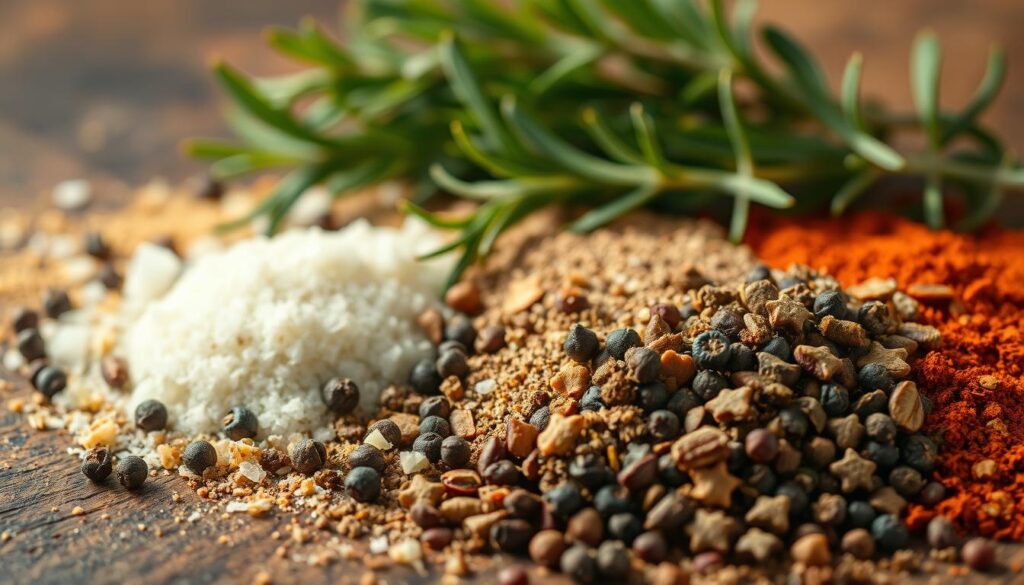
Pros and Cons of Each Method
Marinades are great for tough cuts like flank steak. They tenderize but can make the meat mushy if used too much. Steak rub seasoning, however, creates a crisp crust in just an hour, keeping the meat juicy.
- Marinades: Tenderize with acids (vinegar, citrus) but require 6+ hours of soak time.
- Steak Rub Seasoning: Applies in minutes, creating a caramelized crust via sugar and salt components.
When to Choose One Over the Other
For tender cuts like ribeye, a dry rub for steak gives a great crust in 30 minutes. Texas BBQ experts like Cattleack Barbecue use this method for smoky sears. Use marinades for flank steak or skirt steak, which need acid-based tenderizing.
Try both: Marinate for 2 hours, then dry and rub for a double effect. Don’t marinate tender cuts like filet mignon to avoid over-tenderizing.
Regional Variations of Steak Rubs
Exploring steak rub flavors is like traveling around the world. From Texas’s smoky flavors to Asia’s citrusy zing, each place has its own twist. These cultural flavors can inspire your own best steak rub recipe.
Southern BBQ Rubs
South of the Mason-Dixon line, rubs reflect local traditions:
- Memphis-style: Sweet-savory blends mix paprika, brown sugar, and warm spices like cumin.
- Texas: Bold black pepper and salt dominate, with minimal sweetness—ideal for thick cuts like brisket or T-bone.
- Carolina: Herb-forward mixes with mustard powder shine on leaner cuts like sirloin.
Southwestern Flavors
Borderlands inspire boldness:
- Ancho and chipotle chiles add smoky heat, paired with cumin and oregano.
- Coffee or cocoa nibs add depth—perfect for flank steak or skirt steak.
- Pro tip: Try McCormick’s Santa Maria tri-tip blend, a 75-year-old classic.
International Inspirations
Global twists redefine tradition:
- Argentinian: Salt-based rubs paired with chimichurri herb sauce.
- Brazilian: Garlic, black pepper, and paprika in cuts like picanha (rare in the US).
- Asian fusion: Five-spice powder and sesame in teriyaki-marinated ribeye.
- Mediterranean: Rosemary, thyme, and lemon zest for tenderloin.
Try different regional blends to create your own unique mix. Whether you’re grilling Texas-style or making a Korean bulgogi-inspired dish, let geography guide your next steak rub flavors adventure.
FAQs About Steak Rub
Storing and using a homemade steak rub raises questions. Here’s what you need to know to get the most from your blend:
How Long Can You Store Steak Rub?
A homemade steak rub can last up to 6 months if stored right. Keep it in an airtight container, away from heat and moisture. Pro tip: Label containers with dates to track freshness. Steak rub ingredients like salt and spices stay potent longest when protected from air and light.
- Use airtight jars or containers.
- Keep in a cool, dark pantry or cupboard.
- Check for clumping or musty smells before use.
Does Steak Rub Expire?
Rubs don’t spoil like food, but flavors fade over time. After 6 months, steak rub ingredients lose intensity. Test potency by sniffing—fresh spices have strong aromas. If the blend smells muted, replace it for best results. Avoid refrigeration; cold temps can add moisture, which clumps spices.
For optimal use, make small batches. Adjust homemade steak rub quantities to match your cooking needs. When in doubt, toss old blends and mix fresh ones for bold flavor every time.
Conclusion: Elevate Your Grilling Game
Learning about steak rubs opens up a world of flavors. You can use a top recipe or make your own. These blends turn simple cuts into amazing meals. Every spice and technique helps you grill like a pro.
Summary of the Benefits
Steak rubs make meat taste better and tenderize it. You can make your own mix to match your taste. Even pros like World BBQ Champions use special mixes for flavor.
Try making small batches to experiment with different flavors. You can add Southern or Southwestern spices to your rub. This way, every bite is a reflection of your taste.
Encouragement to Experiment and Enjoy
Begin by adjusting salt and herbs to your liking. Use the All-Purpose Rub as a starting point, then add your own twist. Try adding smoked paprika or citrus zest.
Share your creations online. Post your dishes tagged @orchidsnsweettea and #orchidsandsweettea. Fresh herbs and storing them in airtight jars keep flavors strong. Your next meal can be a hit with just a little creativity.

